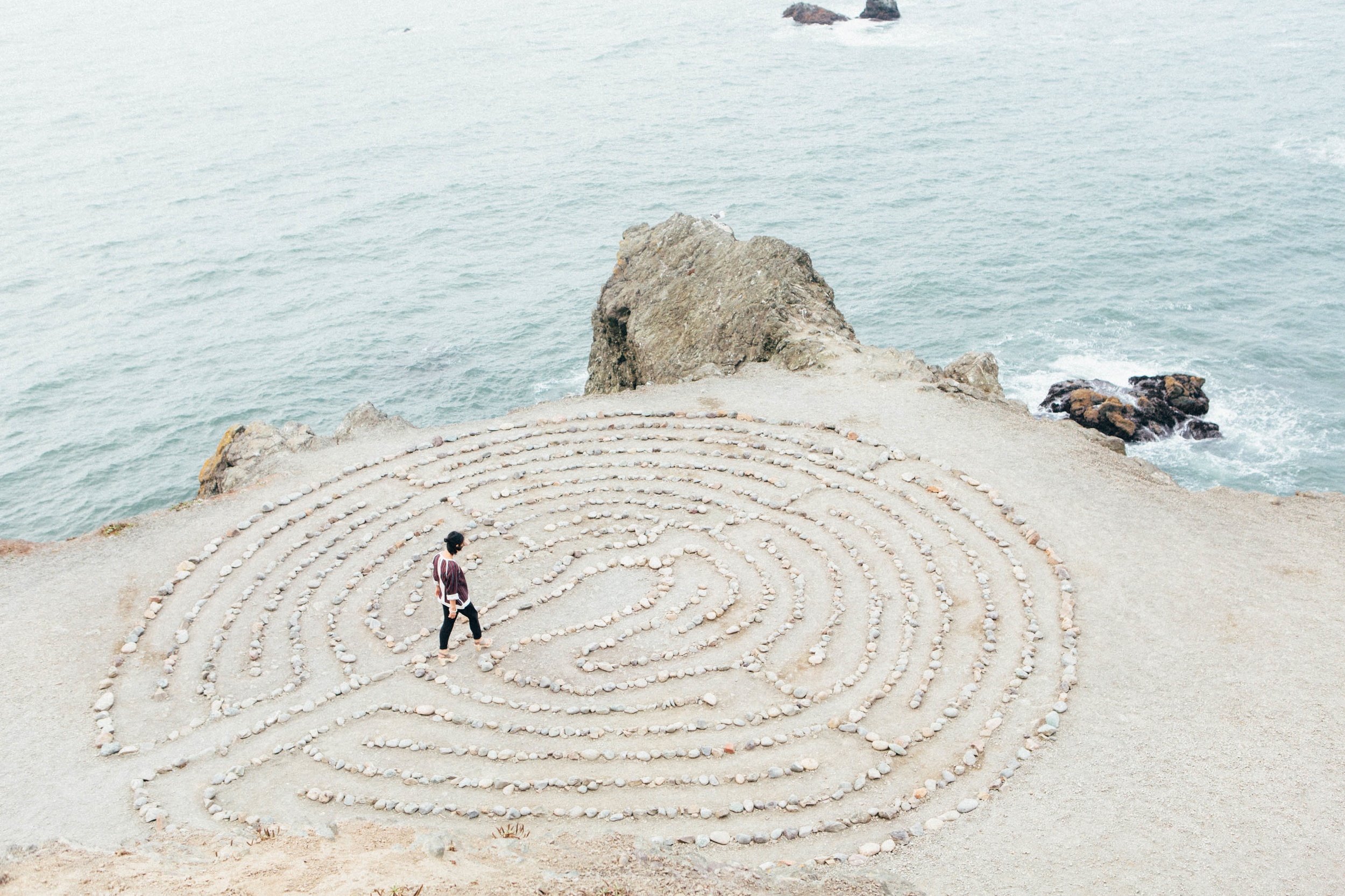Mindfulness, or present moment awareness without commentary, is a way to fully participate in the experiences of life. We may be present with our actions, thoughts, emotions, or sensations. Here are five simple practices that can be done throughout the day in either a formal or informal setting.
1. Stone Thoughts – This practice can be done during formal meditation or whenever your thoughts seem overwhelming. Visualize a body of water, perhaps a cool, clear stream, or a serene lake. When you notice a thought, visualize the thought as a smooth stone dropping through the surface of the water and sinking to the bottom. Some thoughts may be tiny pebbles, others may be large rocks, yet each thought that enters the water eventually settles at the bottom. Many people say to me, “I just can't stop my thoughts or clear my mind!” However, the objective is not to have no thoughts – our brains were designed to think! You do not have to push the stone to the bottom, it will settle there on its own. This is the practice of neither clinging nor rejecting, simply allowing the thought to be.
2. Watch the River Flow – If you find yourself struggling with acceptance, imagine two people sitting on the bank of a river. One person is watching the river flow, wishing it would stop. The other person observes the flow and experiences the river as it is. Which person do you think is more at ease with their experience? When do you find yourself acting like the first person? Our internal resistance to the flow of life does not change it. However, if we practice radical acceptance, we learn to harmonize with what is.
3. Natural Images – This is typically done as formal practice and is attributed to Thich Nhat Hanh. By working with images of nature, we can touch our own basic nature and goodness. While sitting comfortably, close your eyes and let your awareness rest on the sensation of breathing. Repeat the following phrases with each alternating in-breath and out-breath. You may start by reciting the entire phrase then use the cue words as your meditation continues.
Breathing in, I see myself as a flower.
Breathing out, I feel fresh. (flower, fresh)
Breathing in, I see myself as a mountain.
Breathing out, I feel solid. (mountain, solid)
Breathing in, I see myself as still water.
Breathing out, I reflect things as they are. (still water, reflecting)
Breathing in, I see myself as space.
Breathing out, I feel free. (space, free)
4. Breath Awareness – Awareness of breath may be the most simple and fundamental aspect of mindfulness, yoga, and meditation practices. This can be done anywhere, anytime and is extrememly beneficial for anxiety and intense emotions. I enjoy this as part of informal practice as well while standing in line at the grocery store or when I'm stuck in traffic. Allow your awareness to rest on your breath. Notice the in-breath and feel where the body expands as you inhale. Naturally exhale and note how the body slightly contracts. Most of all, enjoy the breath and experience gratitude for this life-giving exchange!
5. Walking Meditation – As soon as we learn to walk, most of us are off and running! It's easy to forget that we once struggled with gravity and the ability to coordinate our body. Find a space, preferably outside in nature, where you can safely walk at a slow speed. An added bonus is walking barefoot, feeling the Earth beneath your feet. With purpose and intention, lift one foot and notice how first the heel, then the arch, then the ball, and finally the toes leave the ground. Feel the muscles in your legs engage as you shift your weight forward to the other foot, swinging your leg, and once again how that foot meets the Earth. Feel grounded and supported while reaching the crown of your head to the sky above.
Wishing you presence and joy!
Namaste

